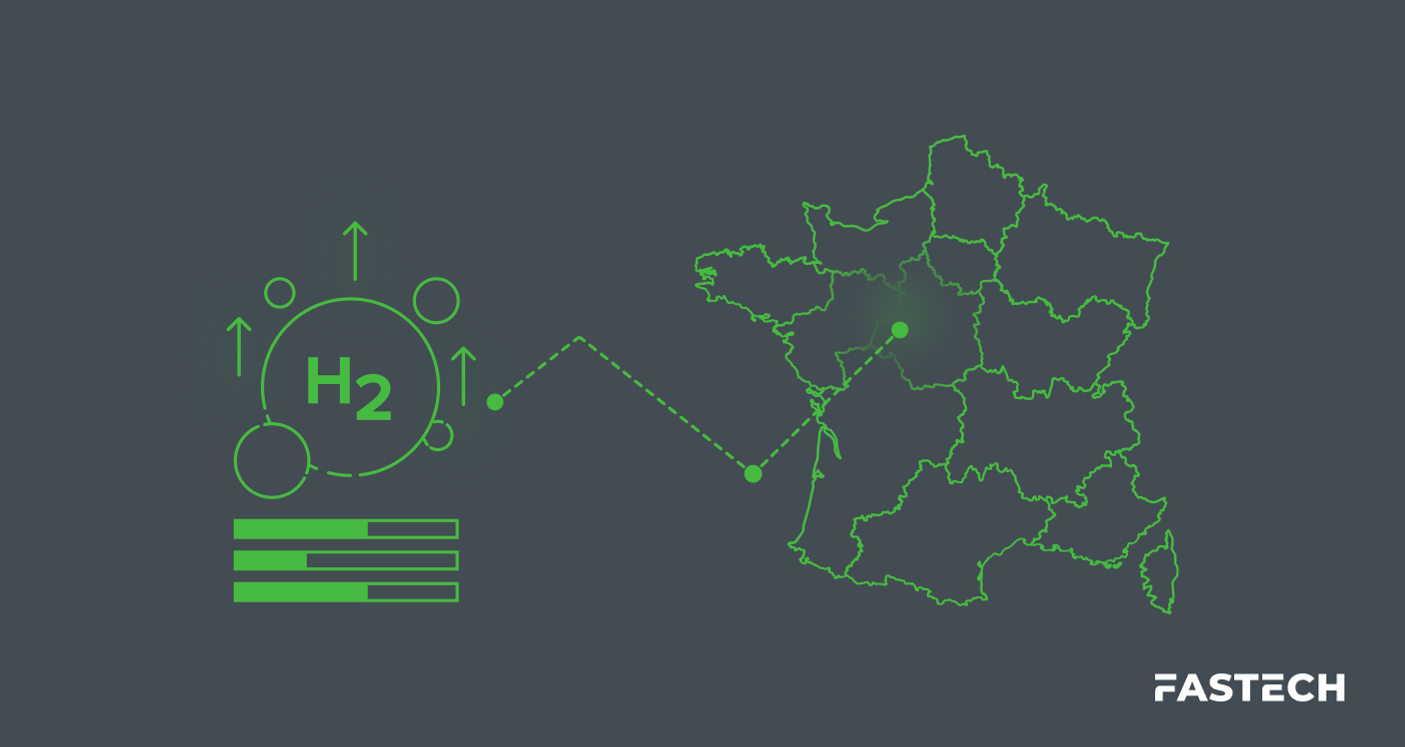Optimizing Cost- and Energy-Efficiency: Best Practices for Commercial HVAC Systems

Heating, ventilation, air conditioning, and refrigeration (HVAC) are crucial to a commercial property’s long-term success and profitability.
Beyond maintaining a healthy and comfortable indoor environment, quality HVAC systems deliver precise environmental control needed to store temperature- or moisture-sensitive inventory.
HVAC systems are typically pricey investments with similarly steep ongoing costs. Estimates place HVAC at around 40-60% of a commercial property’s baseline energy consumption—the largest utility bill contributor on average.
These trends prompt many to seek and develop cost- and energy-saving solutions, so we’ve put together some best practices in this guide for your convenience. Let’s dive in.
Why Energy Efficiency Matters in Commercial HVAC
Improving your commercial HVAC system efficiency isn’t just good for the planet—it’s smart business.
With a significant share of baseline building consumption attributed to air handling, heating, and cooling, even small efforts can translate into big savings. If your organization sets sustainability goals, these improvements will also shrink your operational carbon footprint.
The solutions below range from simple strategies to intensive upgrades, all of which can lead to significant savings.
Assessing Your Current HVAC System
Before investing in any upgrades, it’s important to understand how your system currently performs.
If your building has a software-enabled analytics system, you can find all the information you need from its diagnostics. Otherwise, the best starting point is to schedule a professional energy audit.
Whichever route you choose, collect the following information:
- Measurements of each zone’s heat gain, heat loss, and cooling peaks
- Measurements of each zone’s average temperature, humidity, and total runtime
- Signs of short-cycling, coil freeze-ups, and conflicting or wasteful schedule settings
- Your HVAC manufacturer’s recommended load capacity compared to the actual load profile
Checking these analytics weekly can help you keep your system at optimal performance. Collecting this information is simplest with a building management system (BMS), but you can gain the same information with portable data sensors.
Collecting and analyzing these data points over time can help you detect inefficient equipment or configuration settings and better tailor your HVAC system to your building’s usage patterns.
Regularly Scheduled Preventive Maintenance
A simple maintenance schedule delivers long-term savings by improving energy efficiency and reducing equipment wear.
Below are basic best practices to get you started; you can download the comprehensive maintenance checklist here.
- Filter changes: A clogged filter puts extra pressure on HVAC motors and compressors, raising baseline energy use. Best practices for filter replacement depend on the brand and local environment. Clean facilities—such as offices and laboratories—typically only require quarterly filter changes. Industrial and commercial operations—like manufacturing or heavy-duty transport—generate dust and other particles that may warrant monthly or weekly filter replacement.
- Coil cleaning: Heating and cooling coils foul—build up environmental contaminants—naturally over time. Fouled coils can’t transfer heat as effectively, forcing the system to work harder and use more energy. Have coil inspections and cleanings done at least annually in clean settings. In dust- or particulate-heavy environments, aim for twice a year.
- Ductwork and sealing inspection: Making ducts and seals a part of your annual inspection helps to detect maintenance concerns early. Leaks in duct joints or unsealed seams can waste 20-30 percent of your system’s conditioned air. Ultrasonic devices are the most efficient detection methods, but a simple smoke pencil can help you find leaks in a pinch. Even well-maintained air ducts should be fully resealed on a regular schedule to maintain peak performance.
- Thermostat calibration: Even minor miscalibrations lead to bigger energy bills over time. Inaccurate readings can cause excessive system runtime or costly temperature swings. Re-calibrate at least annually, or twice a year during spring and fall checklists. Consider dual-sensor systems for cleaner readings in large zones.
Scheduling your maintenance calendar in advance and consistently logging your results is potentially the single most effective method for improving your system’s performance.
Smart Technologies for Boosting Efficiency
Once the maintenance basics are covered, you can consider advanced upgrades to get even more value from your HVAC system.
Smart Thermostats
These futuristic devices learn space usage patterns through a network of small sensors that collect data on temperature, humidity, and even usage patterns. Once the system learns the occupants’ habits and preferences, it can adjust protocols to optimize performance for your exact space.
Zoning Features
Zoning divides buildings into independently controlled regions with dedicated sensors and thermostats. This targeted approach allows the system to heat or cool different building regions according to their unique needs. Zoning reduces unnecessary runtime by matching airflow and temperature setpoints to real-time needs.
Variable-Speed Drives (VSDs)
Fixed-speed motors are simple but imperfect solutions with only two settings: on and off. These rapid switches to full power wear heavily on the equipment. Variable-speed drives adjust the motor in response to load demand. These real-time adjustments reduce energy draw by enhancing precision, yielding up to 50 percent energy savings.
Building Management Systems (BMSs)
The pinnacle of advanced HVAC, building management systems track energy usage and automatically adjust controls in real time. Many BMS are compatible with security, lighting, and other smart technologies. You can even set notifications to provide alerts when sensors detect abnormalities, keeping maintenance concerns from becoming emergencies.
Building Design & Operational Habits
So far, we’ve covered maintenance and upgrades for maximizing HVAC performance, but there are proactive measures developers can use to set up their systems for success.
Follow these measures for the best results:
- Seal gaps around windows, doors, and utility penetrations with weather-stripping or spray foam.
- Leverage natural light, heat, and ventilation when possible to decrease system load.
- Consider installing high-performance glazing or window films to reduce solar heat gain.
- Use quality insulation in roofs and walls to prevent heat transfer in harsh weather.
Educating occupants on simple heat-saving habits can further improve their experience and lower the utility bill:
- Close exterior doors and windows whenever the HVAC system is running.
- Avoid blocking supply vents with furniture or equipment for better airflow.
- Adjust ceiling fans to rotate clockwise in cold weather to push warm air downward.
- Use night setback schedules on thermostats to lower temperatures during off-hours.
In mild weather, you can also leverage natural ventilation or night-flush cooling to lower the system load. These simple measures can lower heating and cooling loads overnight.
Long-Term Improvements with Renewable Integration
With sustainability at the forefront of modern industry, many have developed an interest in integrating clean or renewable energy into their HVAC systems.
These solutions can lower your energy bill and carbon emissions at the same time:
- Solar-assisted HVAC: Rooftop solar thermal collectors can help preheat hot-water coils, refrigerant fluids, and conditioned air with the power of the Sun. Some solar systems can even be hardwired to supplement your electricity supply. Integrating solar in HVAC systems regularly lowers energy consumption by 30-65%.
- Geothermal heat pumps (GHPs): Constantly roasted in sunlight, our planet is a relatively constant heat source. Geothermal heat pumps tap into underground climates to help regulate heating and cooling, lowering the load on your HVAC.
- Energy-recovery ventilation (ERV): ERV systems use air exchange cycles as opportunities to transfer heat and moisture between outgoing and incoming air streams. This optimizes utilization of natural temperature and humidity conditions, cutting costs while maintaining a fresh air environment for occupants.
Renewable energy integrations may also qualify for federal tax incentives and incentives from local utility providers—including rebates, credits, deductions, grants, and low-cost project financing. Make use of these programs to improve your return on investment and break-even time.
Partnering With an HVAC Expert
Partnering with the right professional is key to the commercial HVAC experience. Your opportunities to implement the more advanced strategies described depend primarily on your service provider’s abilities.
Choosing a commercial HVAC contractor versed in every stage—from engineering to construction to maintenance—will help cut your installation and upgrade costs by keeping the project under one roof.
With more than 25 years of experience serving retail, restaurant, fueling, municipal, and pharmaceutical settings across America, FASTECH brings detailed technical expertise to every project.
FASTECH Fast Facts:
- 14+ safety certifications to ensure project compliance and quality outcomes
- Technicians certified under ICC, OSHA, and API
- Industry-leading 0.61 EMR rating
Let’s put these HVAC best practices to work and start optimizing your system’s performance today. Contact us to discuss your project goals.




